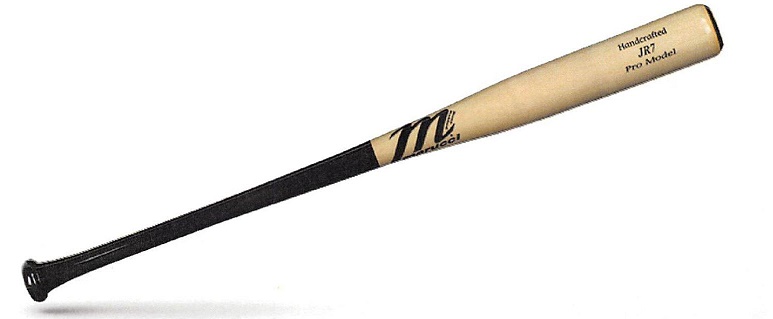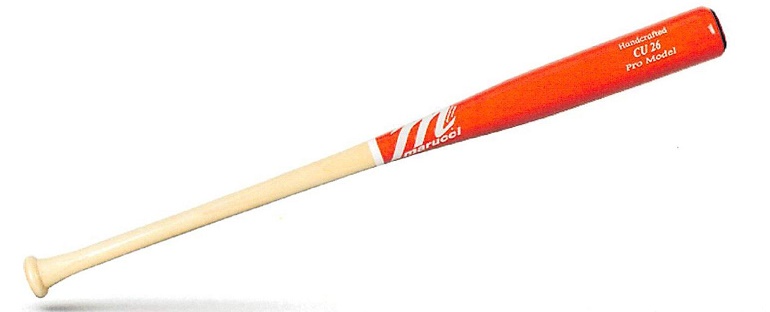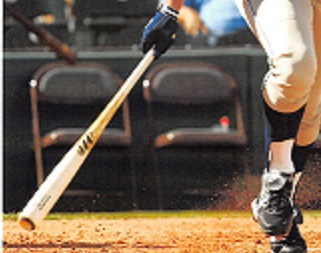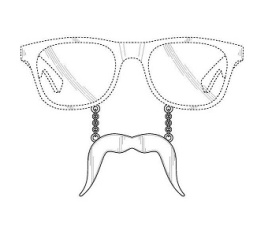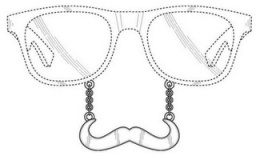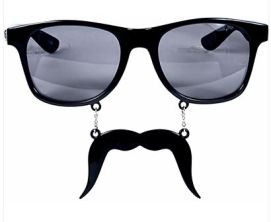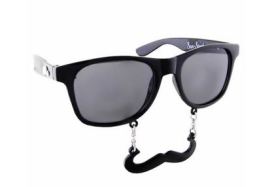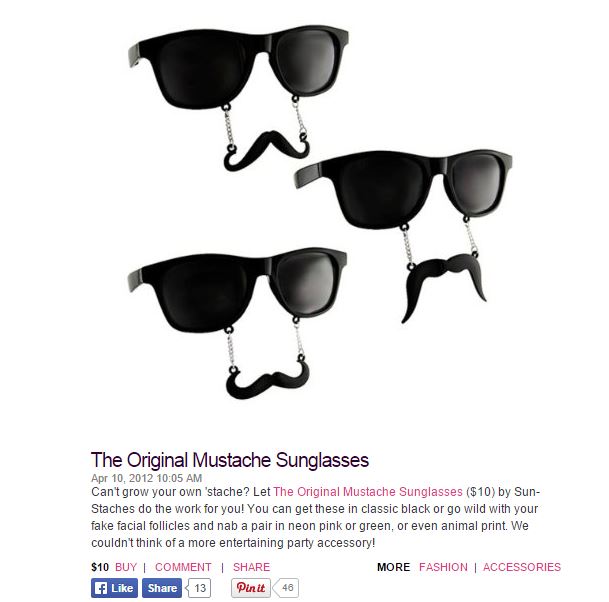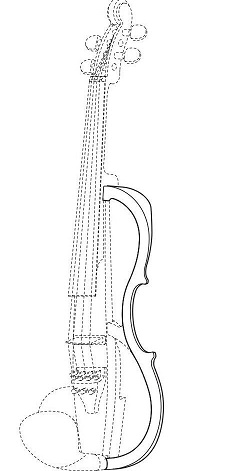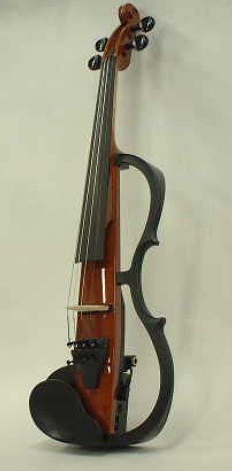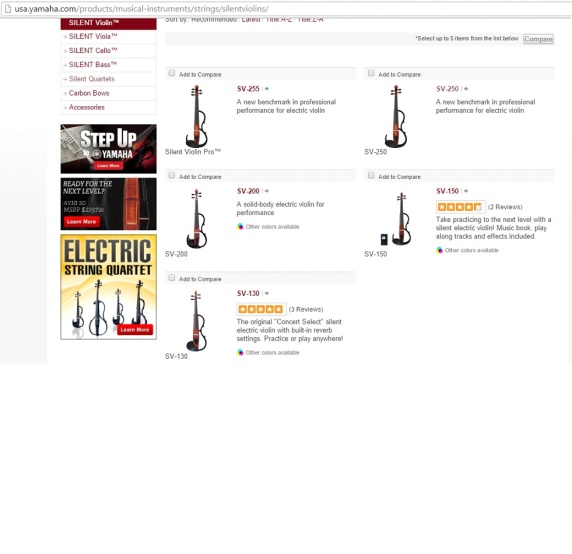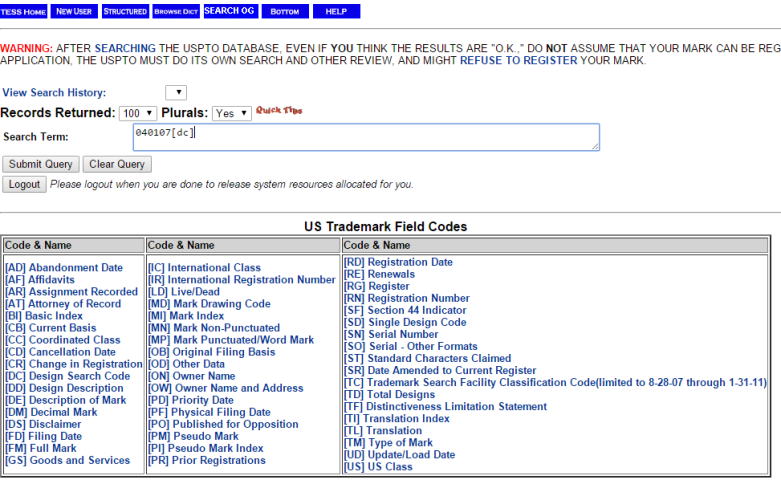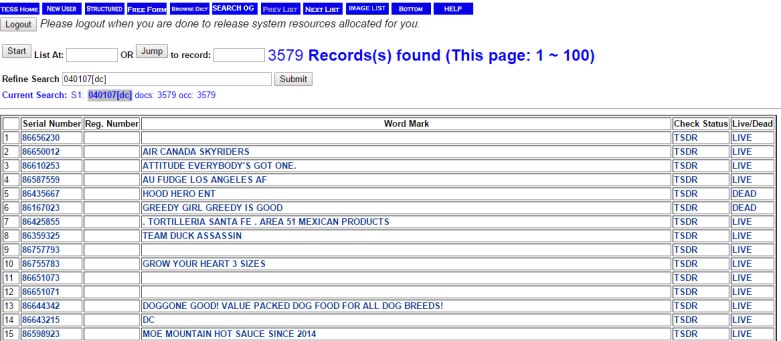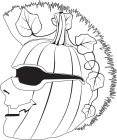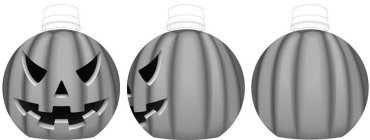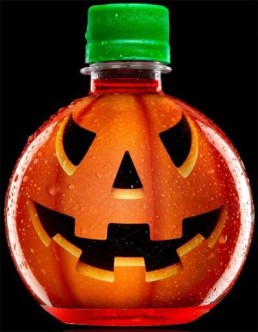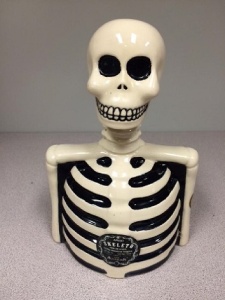In the last few weeks, (1) the overall design of a guitar (Rickenbacker Reg. No. 4774991), (2) a tuning assembly/peg box of the guitar (Bruce Alfred Wright Reg. No. 4767088), (3) configuration of a peg head for a stringed musical instrument (Gibson Reg. No. 4758471) and (4) oval-shaped hole in the body of a guitar (HG Reg. No. 4775227) registered with the U.S.P.T.O. In each application, the applicant was asked to demonstrate acquired distinctiveness because a 3D product design is never inherently distinctive. This means that each applicant had to demonstrate through sales, advertising and recognition that the industry and consumers view these designs as an identifier of source. Below are more details on the trademark registration process.
1) Rickenbacker International Corporation (Rickenbacker) applied to protect its guitar as a 3D “configuration design of a guitar” (shown below left is the guitar, on the right a drawing of the mark) with a claim to 3 prior guitar design trademark registrations (U.S. Reg. Nos. 2513845, 2749116, and 2703395. Under the trademark rules, the Examining Attorney may accept, as prima facie evidence of acquired distinctiveness, ownership by one or more active prior registrations of the same mark on the Principal Register.)
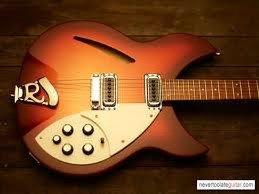

The Examining Attorney refused registration based on (i) functionality, stating, “many of the claimed features [from the drawing of the mark] … have a functional purpose, e.g., the guitar pick-ups are used to convert sound, the neck is used to hold the guitar strings and provide background resistance”; and (ii) lack of distinctiveness, i.e., the mark “consists of a nondistinctive product design or nondistinctive features.” Rickenbacker responded with a claim of acquired distinctiveness and an additional claim of a prior guitar design registration (U.S. Reg. No. 2696920).
With a revised drawing eliminating its claim to several functional items (i.e., adding dotted lines to show those features not to be included as part of the mark (see the drawing below)), the functionality objection was dropped. However, the lack of distinctiveness claim was maintained.
Rickenbacker replied that the shape of its electric guitar has been in use since 1958, is “iconic” in the guitar industry and considered to be a luxury brand in the guitar world. This was followed up with statements from musicians (e.g., “’Rock n Roll Hall of Famer Tom Petty, a world famous guitarist synonymous for his work with … [Rickenbacker] guitars … [stated]: ‘[s]hape is an incredibly important factor, if not the most important, in identifying a brand of guitar. The shape itself acts as a[] symbol of … [Rickenbacker] and is certainly used more regularly than any word logo as a means to identify a guitar’s brand’”).
 After the last response, the Examining Attorney approved the application and a registration (U.S. Reg. No. 4774991) issued on July 21, 2015. The final description of the mark is, “a … [3D] configuration of a guitar body. The broken lines depicting the pick guard, sound hole, tailpiece mounting bracket, neck, fret board, knobs, unornamented bar pickups, screws, switch, and strap locks indicate placement of the mark on the goods and are not part of the mark.”
After the last response, the Examining Attorney approved the application and a registration (U.S. Reg. No. 4774991) issued on July 21, 2015. The final description of the mark is, “a … [3D] configuration of a guitar body. The broken lines depicting the pick guard, sound hole, tailpiece mounting bracket, neck, fret board, knobs, unornamented bar pickups, screws, switch, and strap locks indicate placement of the mark on the goods and are not part of the mark.”
2) Bruce Alfred Wright (BAW) applied to protect a 2D “product configuration for a guitar tuning assembly/peg box located under the bridge of the guitar. The dotted lines are not part of the mark and serve only to show the position or placement of the mark on the goods” and originally supplied the below drawing (left) and a photograph of the guitar (right).


The Examining Attorney refused registration on the grounds of (i) nondistinctiveness; and (ii) requested clarification on the drawing (above left), stating, “[t]he drawing shows a …[2D] image; however it is not clear from the record whether applicant is applying for (1) a …[2D] design mark that is not trade dress; or (2) a … [3D] mark that is trade dress for product design (i.e., the configuration or shape of the goods themselves).”
BAW provided clarification that its mark “consists of a fanciful and unique configuration for a tuning assembly … not commonly used in the musical instrument industry. A standard guitar tuning assembly is located at the top of the guitar’s neck on the guitar’s headstock … [but BAW’s] is located within the body of the guitar containing a smooth edged triangular cut out in center of the tuning assembly providing a modern feel to a common and historic design.”
BAW also submitted a claim of acquired distinctiveness based on its exclusive use of the mark since 2007, advertising (i.e., “focused its attention on a small ‘niche market’ for high-end and uniquely designed guitars”) and declarations indicating that BAW’s mark “is recognized by consumers and throughout the musical instrument industry as a trademark for … [BAW’s] goods.”
The Examining Attorney accepted the acquired distinctiveness claim but because the mark is considered to be“the configuration or shape of the goods themselves,” the mark is 3D not 2D and therefore, a 3D mark description and drawing must be submitted. BAW updated the description to a 3D guitar design “comprising a guitar tuning assembly/peg box located under the bridge of the guitar in the shape of a four-sided polygon with the top side longer than the bottom side and the left and right sides at a diagonal inward toward the bottom side. The dotted lines are not part of the mark and serve only to show the position or placement of the mark on the goods” with the following 3D drawing:
 The application was subsequently approved and a registration (U.S. Reg. No. 4767088) issued July 7, 2015.
The application was subsequently approved and a registration (U.S. Reg. No. 4767088) issued July 7, 2015.
3) Gibson Brands, Inc. (Gibson) applied for “a fanciful configuration of a peg head for a stringed musical instrument, namely a guitar” with the “literal” element of GIBSON. The following drawing (left) and photograph of the guitar section (right) was provided:


The Examining Attorney issued an objection to registration based on (i) nondistinctiveness – product design is not registrable without a demonstration of acquired distinctiveness; and (ii) new drawing that disclaims the functional aspects like the knobs and guitar strings (in dotted lines).
In reply, Gibson provided evidence of acquired distinctiveness, i.e., the mark “consists of a design configuration for the headstock portion of a stringed musical instrument along with the inherently distinctive and famous stylized GIBSON® wordmark displayed on the truss-rod cover (‘Flying V Headstock Design’). Gibson’s Flying V Headstock Design is recognized by consumers as indicating Gibson as the source of the stringed instrument. The use of the headstock design as a trademark is extremely common in the stringed instrument industry.” Gibson also provided information on sales, advertising and recognition in the industry for over 60 years.
With the revised drawing (see below) and change in the mark description, (“[t]he mark consists of a … [3D] configuration of a fanciful configuration of a peg head for a stringed musical instrument, namely a guitar, with the word GIBSON appearing sidelong upon the head. The broken lines depicting the guitar knobs, strings and the start of the neck indicate placement of the mark on the goods and are not part of the mark”), the application was approved and a registration issued (U.S. Reg. No. 4758471) June 23, 2015.

4) HOSHINO GAKKI CO., LTD. (HG) applied to protect its guitar design, (“configuration of a somewhat oval-shaped hole in the body of a guitar, featuring a scalloped hand grip with four grooves on the long side of the hole closest to the edge of the guitar and a smooth surface on the other long side. The outline of the guitar, shown in broken lines, is not part of the mark and serves only to show the position of the mark on the goods”). The drawing (below left) and photograph of the mark (below right):


HG is the owner of a Supplemental Registration (indicating the mark can function as a mark but is not, at the time of registration, eligible for the Principal Register. Registration issued in 2008. After 5 years of registration, it may be registered on the Principal Register if acquired distinctiveness can be demonstrated).
In this new application, the Examining Attorney required information on acquired distinctiveness to which HG provided sales, advertising and Wikipedia information. The HG marks is featured on a Wikipedia entry for Ibanez JEM and the mark is noted for its being “originally incorporated into a guitar made for American guitarist, songwriter, and producer Steve Vai, who has played with Frank Zappa, recorded with Public Image Ltd., David Lee Roth, and Whitesnake.” After submission of the information, the application was approved and a registration (U.S. Reg. No. 4775227) issued July 21, 2015.
Blog by: Mary B. Aversano
 Aversano IP Law | aversanoiplaw.com
Aversano IP Law | aversanoiplaw.com
E: Trademarks@aversanoiplaw.com | T: (310) 904-9380
Reprinted at IPBulgaria.BG entitled “ФОРМА НА КИТАРА – 3D ТЪРГОВСКА МАРКА”. For more information contact Aglika Ivanova, Attorney-at-Law & European Trademark Attorney at IP Consulting Ltd (aivanova@ipconsulting.eu).
![]() Aversano IP Law | aversanoiplaw.com
Aversano IP Law | aversanoiplaw.com